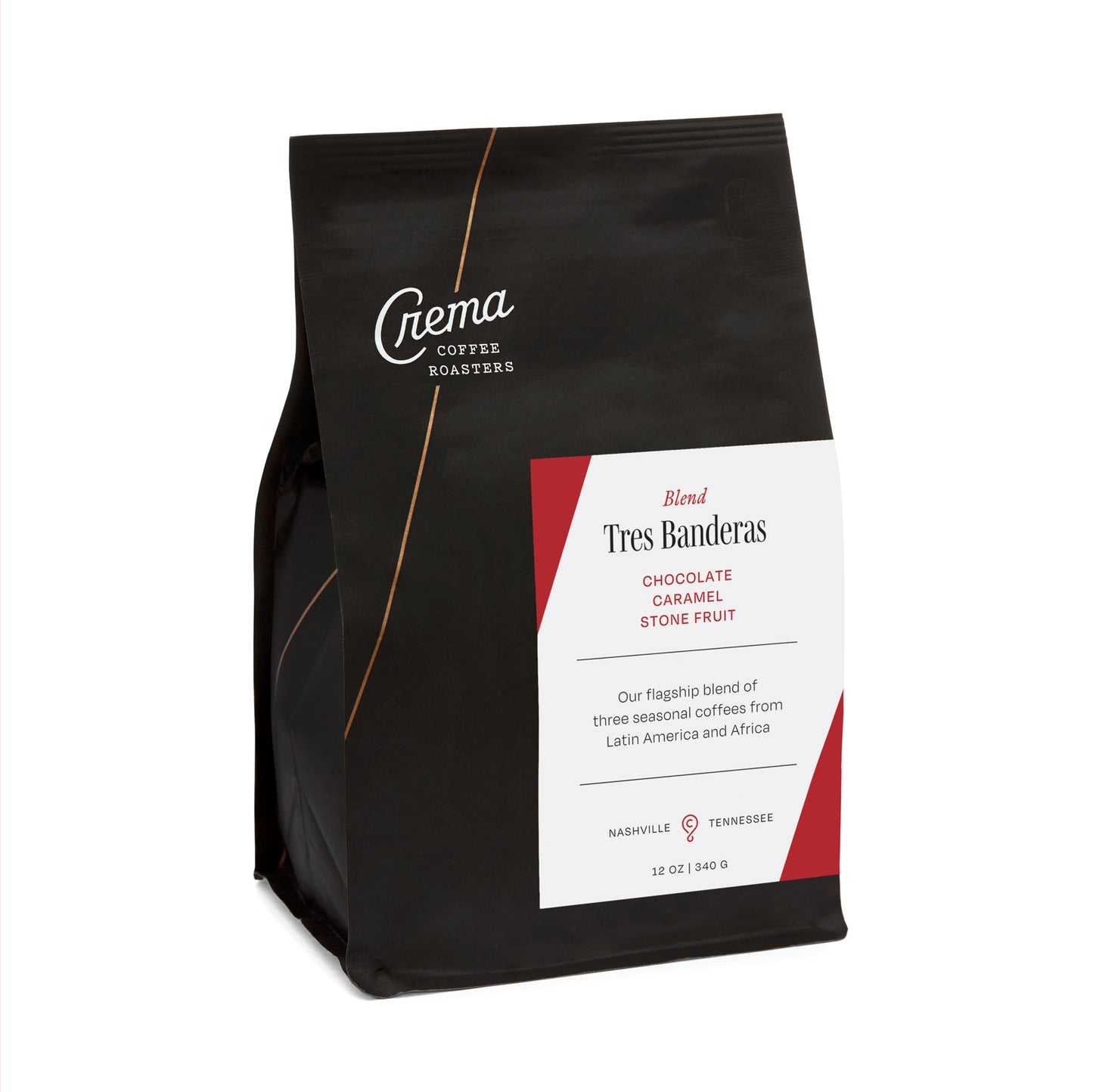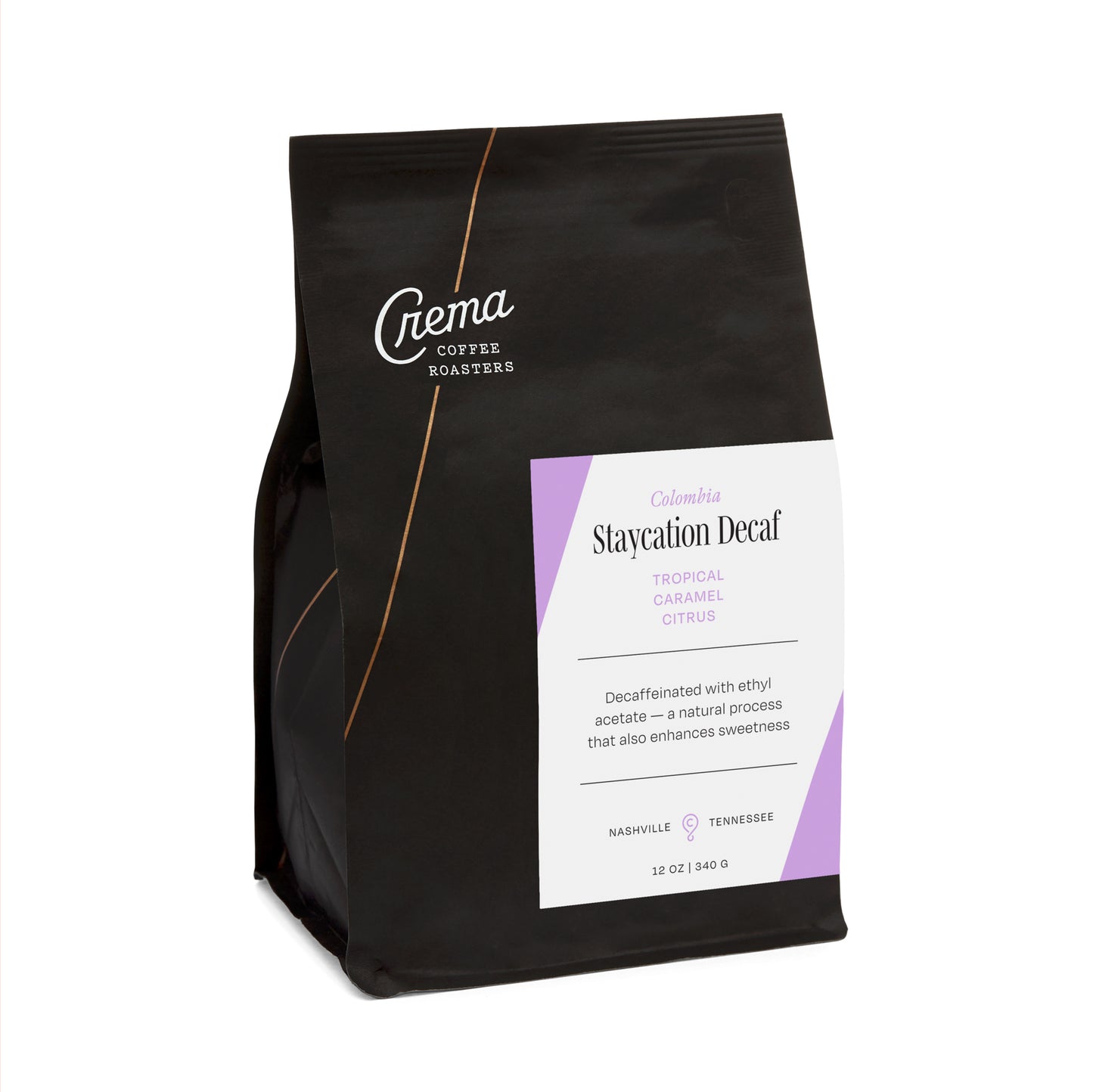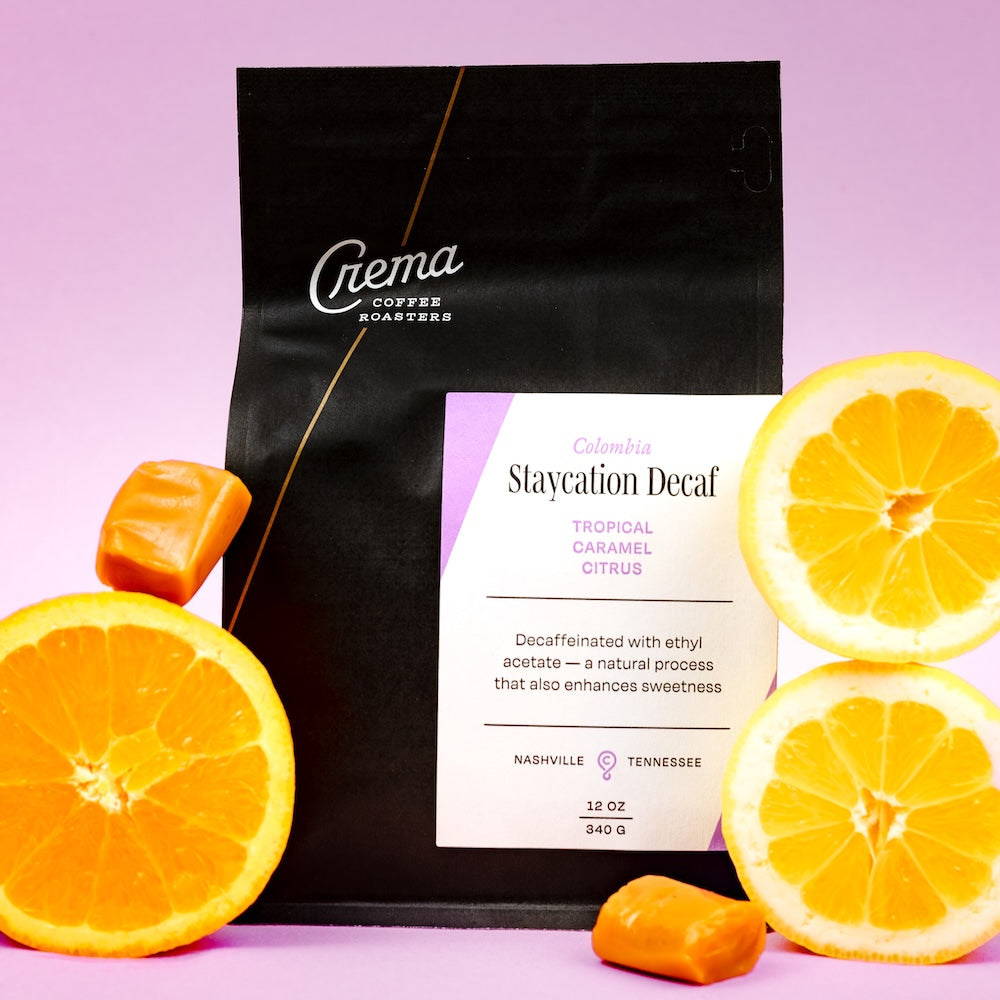Every bag of our coffee has a section that says “tasting notes” followed by three descriptors, typically a fruit or two and something sugary like toffee or caramel. Though, sometimes, there is a floral note, or an adjective like sparkling. You may think, “Does it really taste like that?” The answer is actually, amazingly, yes. Coffee is full of chemical compounds that result in a world of flavors and aromas that anyone can experience with a little practice and attention. Let’s break it down.
P.S. There’s a video version of this post at the bottom if that's more your speed!
SOME GROUND RULES FOR HOW TO TASTE COFFEE
There are a lot of industry standards about how to taste coffee that are used for a dozen different specific reasons. We’re here to provide accessible tools to help you learn:
- How to better taste (and enjoy) your coffee
- Describe what you like and don’t like in a coffee
- How to talk about coffee so you can purchase and enjoy more of what you love and less of what you don’t.
So, the rules we’re about to lay out are less about how to be technically good at something, and more about how to get the most out of the tasting process.
Use your nose.
Aroma is odor, which you sense through your nose and the back of your mouth. Taste is what you experience on your tongue and it’s about sensations: saltiness, sweetness, sourness, bitterness, and umami. Flavor is the combination of aroma and taste. (source)
In other words, our tongues and noses (and that mystery space between the two) work together to create our experience of flavor. The aroma aspects of that collaboration are what bring deeper definition and understanding to the flavor. Think about it like this: if you have a cold and your nose is all stuffy, your sense of taste is significantly limited. You may experience broad categories of taste, like sweet, salty, sour, but that’s about as complex as it gets. We need the function of our noses to create a full flavor experience.
Don’t worry about precision and specifics.
Take your perfectionist hat all the way off for this one. We experience flavor because our taste buds and olfactory systems pick up information, send it to our brain, and translate it into a language we learned by repeatedly associating certain foods with certain sensory signals. When you bite into an apple, you see it’s an apple, you feel the apple, you know its texture and scent, so your brain can easily call up that information and tell you "this is an apple."
When you drink a sip of coffee, your brain has “coffee” as a general category locked and loaded because of the scent, texture, and appearance. It takes time and practice to teach our brains to find much beyond its training of simply calling up "coffee” when we experience coffee-like stimuli.
When you start learning to taste, you’ll drink coffee and think this tastes like coffee, that’s normal! It’s what your brain is used to. The day will come when you take a sip and think, this tastes tart. (Amazing!!) Then you can ask, is it tart like lemons or tart like apples? You may not know the answer at that moment, but over time, you’ll speak flavor fluently.
Trust yourself.
Tasting coffee is about tuning into your own experience, which means two key things: you’re pulling from your unique memories with taste and smell, and you can’t be wrong. You get better at tasting, in part, by trusting the connection that your brain makes with the sensory input it’s receiving, especially those beyond the general category of “coffee.” So, if you take a drink of coffee and think of the cake you had at your fifth birthday, or the smell of sunscreen, or blue raspberry Jolly Ranchers, or a spice in that one soup you ate all of growing up, go with it! Remember, you can’t be wrong. The more you lean into new associations, the faster you’ll learn to trust what your brain is telling you.
Pay attention to the foods you eat and the smells you smell when you’re not drinking coffee.
Practice really noticing what an orange tastes like, or an apple, or chocolate. Think of it like vocabulary practice. The more specific information you can store about different tastes and smells, the easier it will be for you to recall those words later when you encounter the same things in coffee. You will probably enjoy your food more too, which is a major bonus.
Make note of the stuff you like AND the stuff you don’t like.
Coffee is full of flavors. Not all of them are great. It is not only okay to name and note things that you don’t like, it’s an important part of learning how to taste and enjoy coffee. If you only pay attention to what you like, your vocabulary will be incomplete.
Taste at different temperatures.
Keep tasting your coffee as it cools all the way down to room temperature, the cooler a coffee is, the more you’ll be able to taste. It’s also really interesting to notice the differences in how a coffee tastes as it changes temperature.
INTENTIONALLY TASTING COFFEE
There are two main ways to intentionally taste coffee that we want to highlight: comparative coffee cupping and paying attention to your morning cup of coffee (we’re going to call this mindful tasting from here on out to keep it simple.)
-
Coffee Cupping
- A more 'formal' way of tasting coffee that involves a special (simple) brewing method and process. You can find our guide to coffee cupping so you can do it at home!
-
Mindful Tasting
- This method is great because you can do it any time you have coffee. You’ll simply give your morning or afternoon cup a little bit more notice. The methodology here is to look for and make a mental or literal note of what you experience as you drink the coffee.
Below, we'll outline some terminology and tips for making those mental or literal notes about how the coffee tastes and what to keep in mind when you're tasting.
5 SENSORY ATTRIBUTES TO LOOK FOR IN COFFEE
Everything that you taste, smell, or feel when drinking coffee will fall into one of these five areas. When you are cupping or mindfully tasting, look for each of these and see what you can find. One method a lot of us use is to take 1-2 slurps or sips and just concentrate on one area, like acidity. Really think about how you’re experiencing acidity in the coffee and nothing else. Then, move on to the next thing.
It should be noted that all of the characteristics listed below are typically measured by both quality and intensity. As you taste, try asking yourself how intense is this characteristic and then, what is the quality of it? You can encounter a taste that is really strong, but not very pleasant, or one that is difficult to notice, but delicious. As we go through each of these five characteristics, we’ll explain how each one appears in coffee, how you may experience them, and some questions to ask yourself as you go through the process.
1. Aroma
Aroma is how coffee smells when brewed. This is your first sensory encounter with a coffee and smell is a significant part of what you taste. Coffee is full of aromatic compounds that are released as you grind the beans. Begin to notice with your nose. Does it smell good? Does it smell intense or delicate? What do you smell? Do you like it? Does it remind you of anything--bring any words, foods, memories, or colors to mind?
2. Acidity
Acidity is a sharp and pleasing aftertaste, the liveliness of the coffee. Acidity is present in all coffee, so what you’re looking for when you’re thinking about acidity is what kind. Acidity is what brings a quality of brightness and freshness to our favorite foods and drinks. Think about fruit--apples, peaches, citrus, berries, tropical fruits--all of them have acidity.
When you taste coffee for acidity, pay attention to the side of your tongue--this is where you’ll feel it. You may salivate a bit like when you eat a lemon. Noticing these reactions is noticing acidity. The next step is to think about the intensity and quality of the acidity. Is it very tart, like a lemon or lime? Is it mild like a red apple, or crisp like a green apple? Do you notice it immediately, or do you have to search for it?

3. Sweetness
Sweetness is present in all coffee, but it is different from the sweetness provided by simple sugars like those we use for baking, or the sugar found in fruit. Sweetness in coffee comes from a variety of factors, including fermentation (which happens during processing) and caramelization (which happens during roasting.) It’s sometimes easiest to notice it in the aroma, or in relation to the acidity as an element of balance.
When you look for sweetness, think about fruits and foods that have a more caramelized sweetness such as toffee, syrup, honey, brown sugar and caramel. You won’t experience anything as distinctly sugary as these foods, but you may find flavors along the same lines. Ask yourself, does this coffee feel balanced or rounded to me? Are there sweet flavors I can detect, like the sweetness I taste in fruits? Do I taste a dark sweetness like caramel or molasses?

4. Body
Body is often referred to as texture or mouthfeel. It refers to how the coffee feels in your mouth: is it heavy or light? (Think: water vs. milk or milk vs. cream)
Body can be sensed by allowing the coffee to rest on the tongue and by rubbing the tongue against the roof of the mouth. What does this coffee feel like as you drink it? Is it heavy or light? Smooth or oily?

5. Finish
Finish is about what you experience after you swallow coffee--the lasting impression the coffee leaves. This isn’t necessarily a distinct taste, but it is one of the most defining factors between good coffee and really great coffee. You’ll look for two main things when you’re thinking about finish: what was it like and how long did it last. Do you have a lingering sweet taste in your mouth? Is there a bitterness? The biggest question though is, was this pleasant, did I enjoy it?
YOU’RE READY TO TASTE COFFEE!
Now you know the basic methods of how to taste coffee and what to look for when you’re tasting, all that’s left to do is try it! Take your time and take it lightly. Remember to trust your gut and enjoy this. If you’re not having fun, what’s the point? This is all for your better enjoyment and discovery after all.
If you want to start looking for more specific verbiage for what you taste, this flavor wheel is the current industry standard (though, there is an ongoing conversation of refining it and making it more applicable and accessible.) And if you want to get really nerdy about it, this website has an interactive wheel with all kinds of science-y details. However you choose to delve into tasting coffee, we hope we’ve set you on a path of many deeply enjoyed sips.
YouTube Video: How To Taste Coffee
← Older post Newer post →








